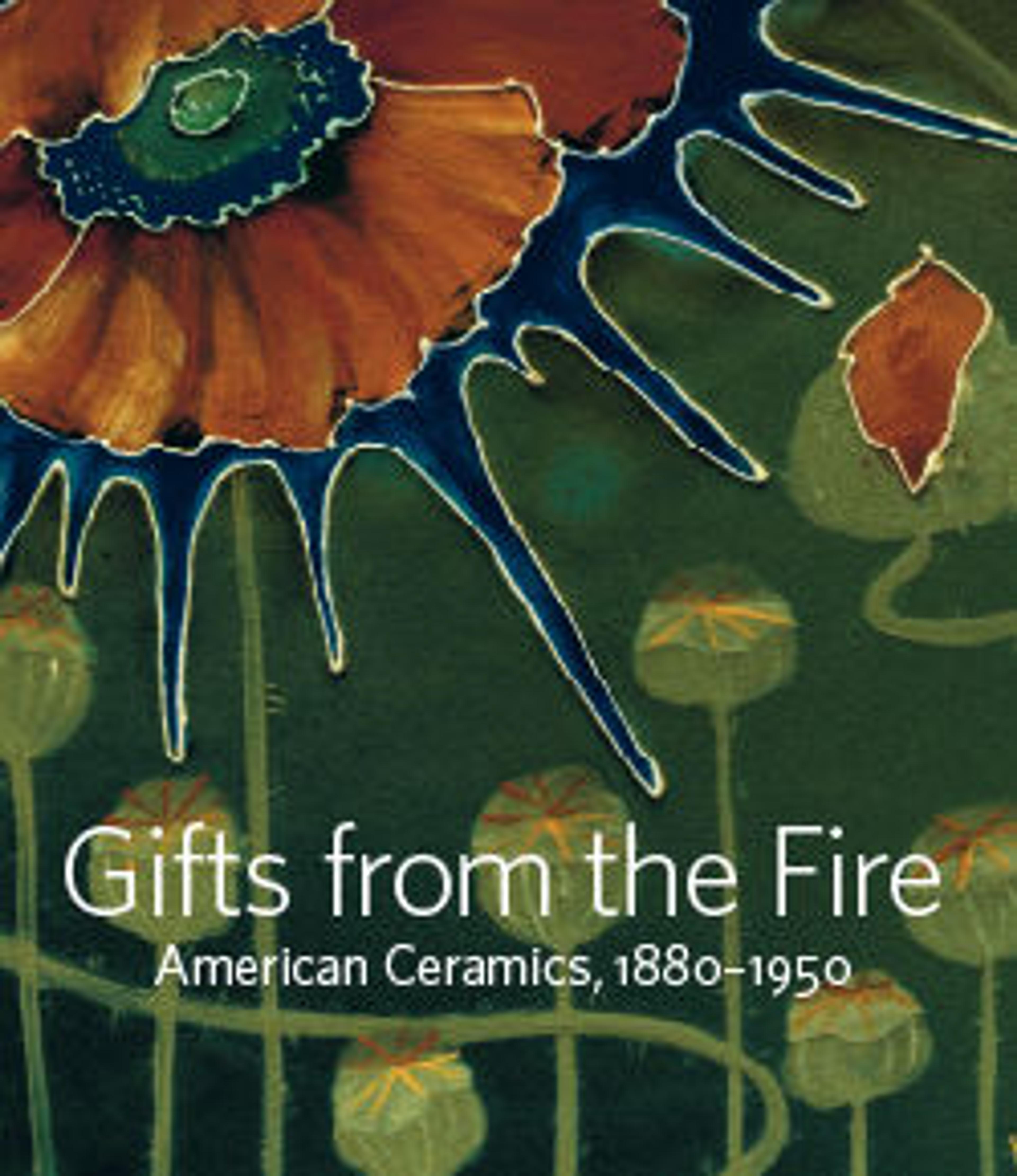Vase
George Ohr of Biloxi, Mississippi, was arguably the quintessential American art potter: he built his own kiln, dug his clay, threw his vessels with extreme proficiency on the potter’s wheel to wafer thinness, altered those shapes, and then covered them with his own novel glazes. In form and decoration they are essentially Abstract Expressionist objects—almost 50 years before that movement was founded. These two vases illustrate especially well how Ohr’s lithe, flamboyant, ribbon handles transform a traditional vessel form. On one, the addition of the serpentine handles—with five points where the interior of the handle attaches to the body of the vase—give the vessel an entirely new profile. The second vase exhibits not only Ohr’s unusual serpentine handles, but also his fascination with altered form, where he squeezed and pinched the upper portion to form a double-necked vessel. The handles almost give the impression of wings attached to the slender waist of the vase. In both examples, the handles are reminiscent of the extravagant dragon stems on Venetian glass goblets.
The glazes on these vases also exhibit Ohr’s novel glazes, most of which were unlike anything ever seen in American ceramics at that date. The orange glaze is a hue that harks to the palette of Fauvist painting; the other vase, in an expression of Ohr’s disregard for convention, features two different glaze treatments, one on the front and the other on the back.
Ohr was a colorful character, and his quirky pottery became one of the added tourist attractions on Mississippi’s gulf coast. Self-proclaimed the "Greatest Art Potter on Earth," he was well ahead of his time, and the vases that he deemed "worth their weight in gold" would not command such prices until a few decades ago. Barely ten years after he began making such vases, Ohr closed his pottery, and packed up his pots, literally not to be discovered for another 50 years. Both of these vases came virtually straight from the artist’s cache, and were purchased by Martin Eidelberg, the donor, when the rediscovery of art pottery was in its infancy in the early 1970s
The glazes on these vases also exhibit Ohr’s novel glazes, most of which were unlike anything ever seen in American ceramics at that date. The orange glaze is a hue that harks to the palette of Fauvist painting; the other vase, in an expression of Ohr’s disregard for convention, features two different glaze treatments, one on the front and the other on the back.
Ohr was a colorful character, and his quirky pottery became one of the added tourist attractions on Mississippi’s gulf coast. Self-proclaimed the "Greatest Art Potter on Earth," he was well ahead of his time, and the vases that he deemed "worth their weight in gold" would not command such prices until a few decades ago. Barely ten years after he began making such vases, Ohr closed his pottery, and packed up his pots, literally not to be discovered for another 50 years. Both of these vases came virtually straight from the artist’s cache, and were purchased by Martin Eidelberg, the donor, when the rediscovery of art pottery was in its infancy in the early 1970s
Artwork Details
- Title:Vase
- Maker:George E. Ohr (American, Biloxi, Mississippi 1857–1918 Biloxi, Mississippi)
- Date:ca. 1897–1900
- Geography:Made in Biloxi, Mississippi, United States
- Culture:American
- Medium:earthenware
- Dimensions:H. 10 1/4 in.
- Credit Line:Gift of Martin Eidelberg, 2017
- Object Number:2017.444.1
- Curatorial Department: The American Wing
More Artwork
Research Resources
The Met provides unparalleled resources for research and welcomes an international community of students and scholars. The Met's Open Access API is where creators and researchers can connect to the The Met collection. Open Access data and public domain images are available for unrestricted commercial and noncommercial use without permission or fee.
To request images under copyright and other restrictions, please use this Image Request form.
Feedback
We continue to research and examine historical and cultural context for objects in The Met collection. If you have comments or questions about this object record, please contact us using the form below. The Museum looks forward to receiving your comments.
